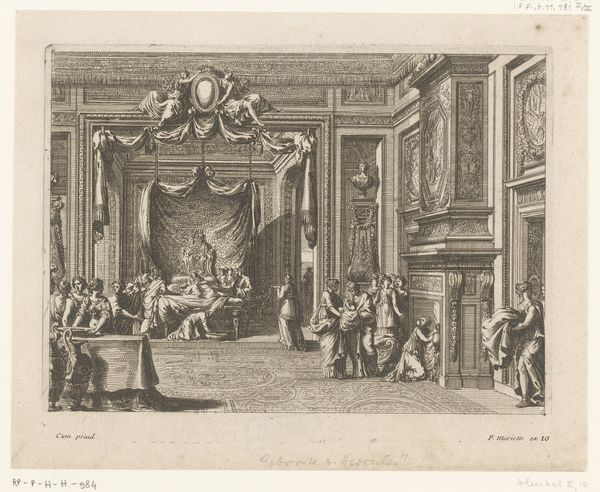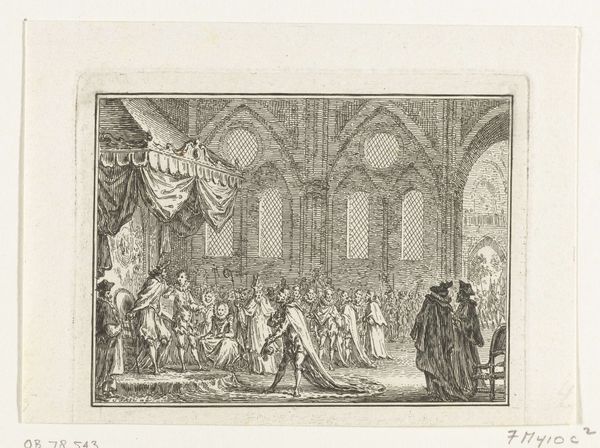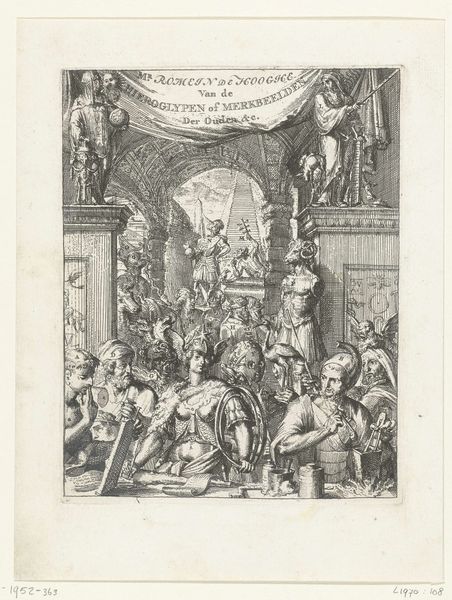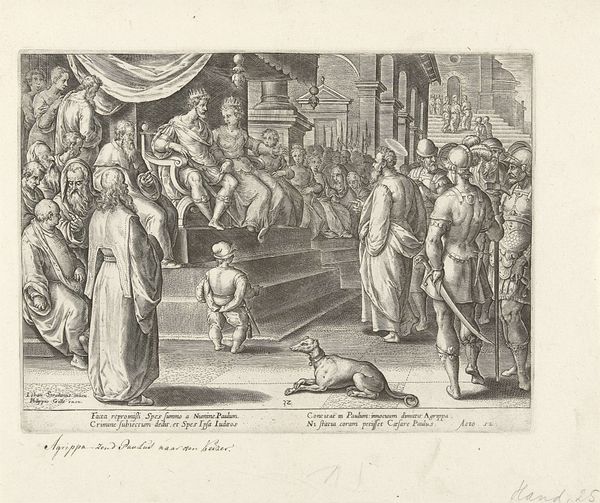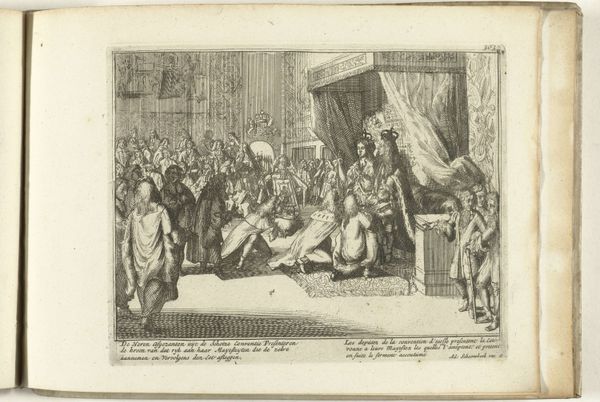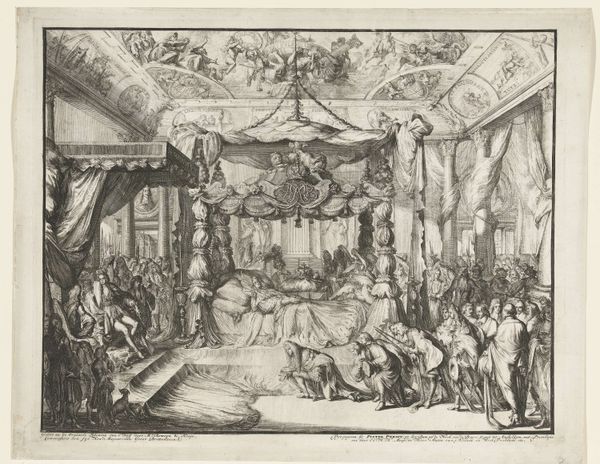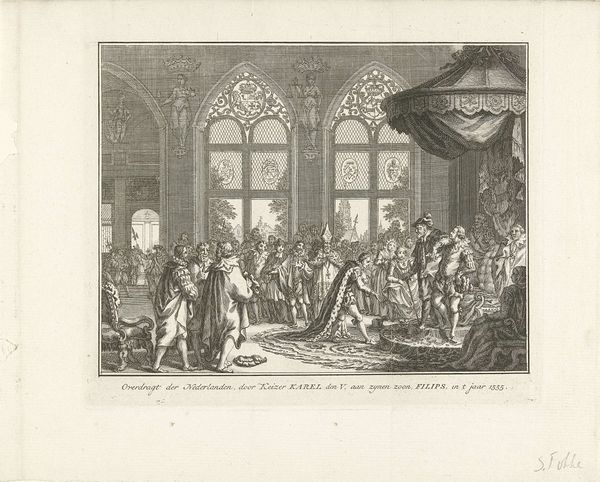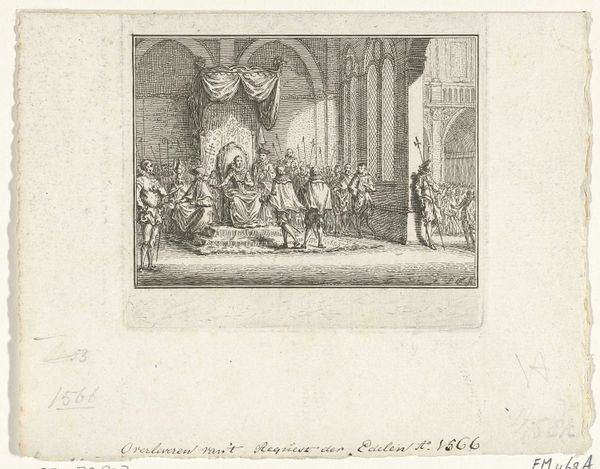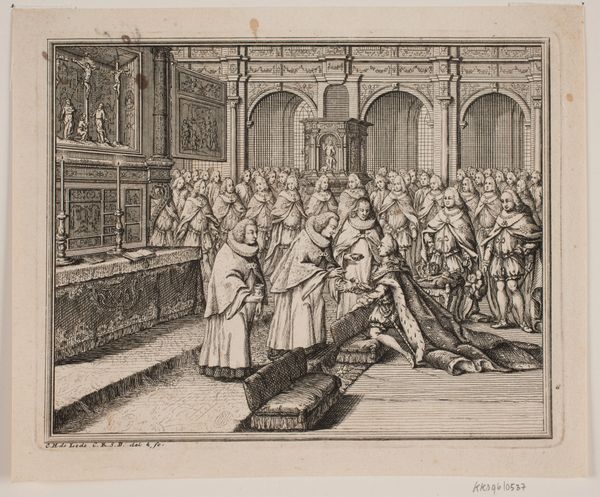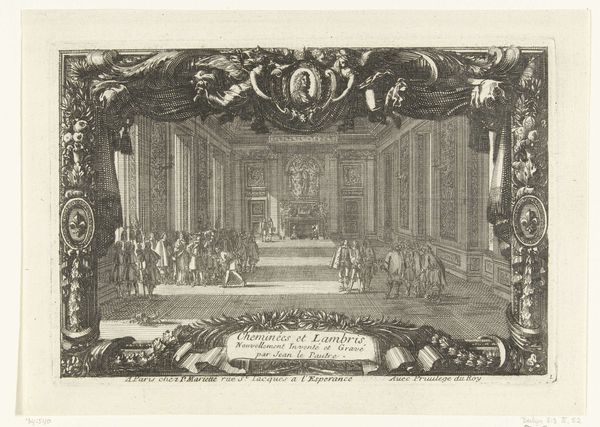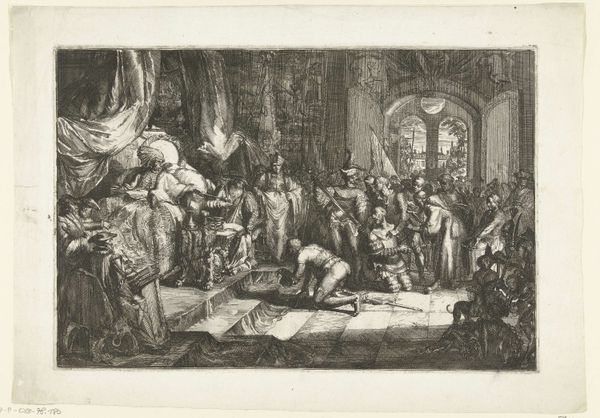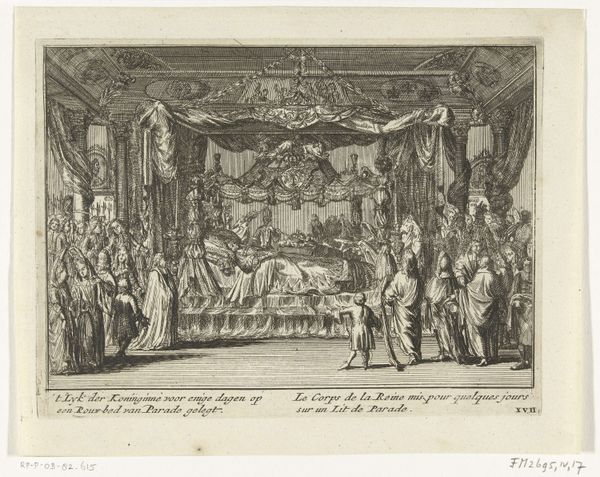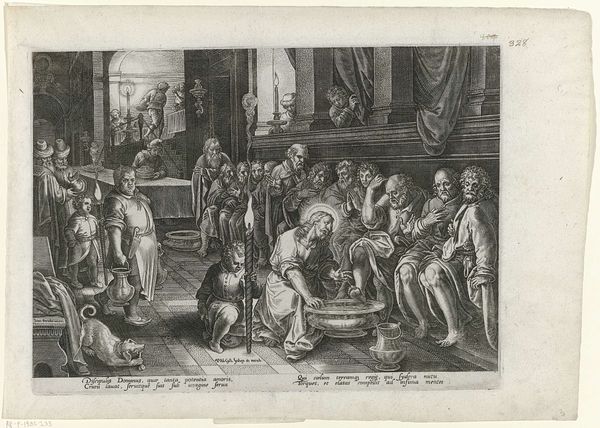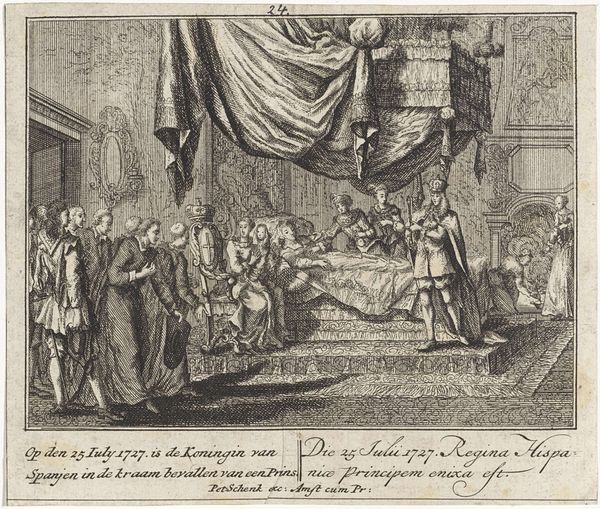
De leden van het parlement condoleren de koning Willem III na het overlijden van de koningin, 1695 1695
0:00
0:00
print, engraving
#
narrative-art
#
baroque
# print
#
figuration
#
line
#
history-painting
#
academic-art
#
engraving
Dimensions: height 155 mm, width 202 mm
Copyright: Rijks Museum: Open Domain
Curator: At first glance, I see a stark representation of formality and grief, with stooped figures approaching a seated king. The overwhelming detail in this print almost feels claustrophobic, emphasizing the weight of the moment. Editor: This is a line engraving dating back to 1695. It captures the moment the members of parliament offer condolences to King Willem III after the death of the queen. The artist, unfortunately, is anonymous. We find it in the Rijksmuseum collection. Curator: The cultural memory embedded here is thick. We see the performative aspect of mourning, translated through the strict visual language of Baroque art. Notice how everyone is arranged in terms of rank and decorum; it’s not just sadness on display but a very calculated performance of grief. Editor: Precisely. The artist gives visual form to the socio-political dynamics in play. Look at how the architectural setting emphasizes the power and grandeur of the monarchy. The scene reminds us of the period's understanding of divine right and the public role assigned to both ruler and parliament in times of personal tragedy. These kinds of printed images, of course, functioned as early forms of political broadsides, meant for distribution and public consumption. Curator: The linear precision of the engraving adds to the scene's austerity. Each tiny, etched line contributes to the overall feeling of solemnity and historical import. It almost strips bare any sense of personal emotion in favour of adhering to visual traditions of lament. It makes me think about the symbols related to death during this period. What did people internalize from imagery such as this? Editor: It prompts questions about the broader distribution and reception of such imagery too. How would the public at large interpret these representations of royal grief and political process? Would they see it as genuine or simply another instance of courtly spectacle? These were powerful pieces of political communication. Curator: Exactly. By condensing historical events and disseminating symbols related to status and honor, prints like this played a key role in molding cultural perceptions of royalty and the balance of power within the State. Editor: Looking at this artwork reminds us that images don’t simply reflect the past; they actively shape historical narratives. It’s a snapshot into both private mourning and very public displays of power.
Comments
No comments
Be the first to comment and join the conversation on the ultimate creative platform.
